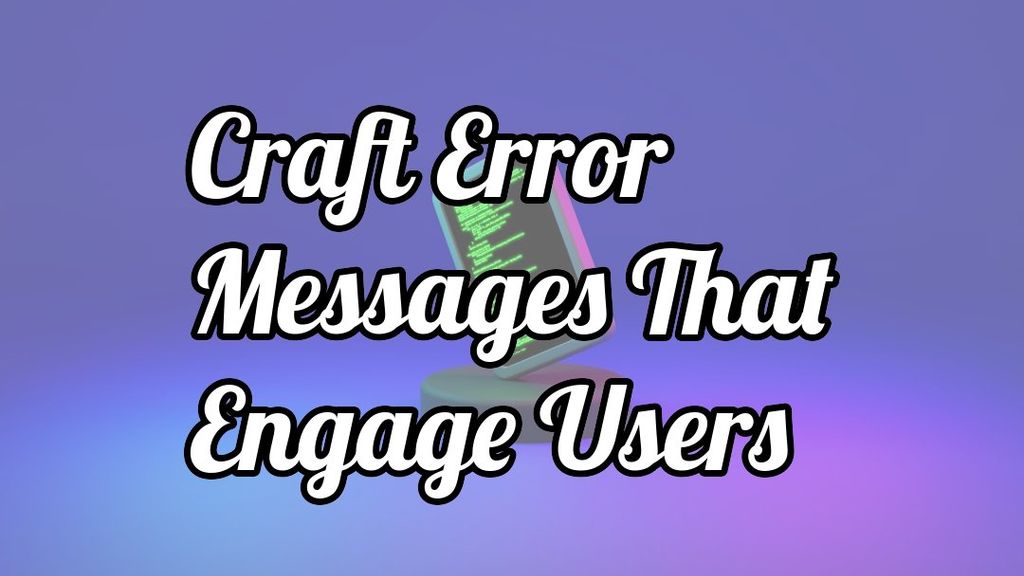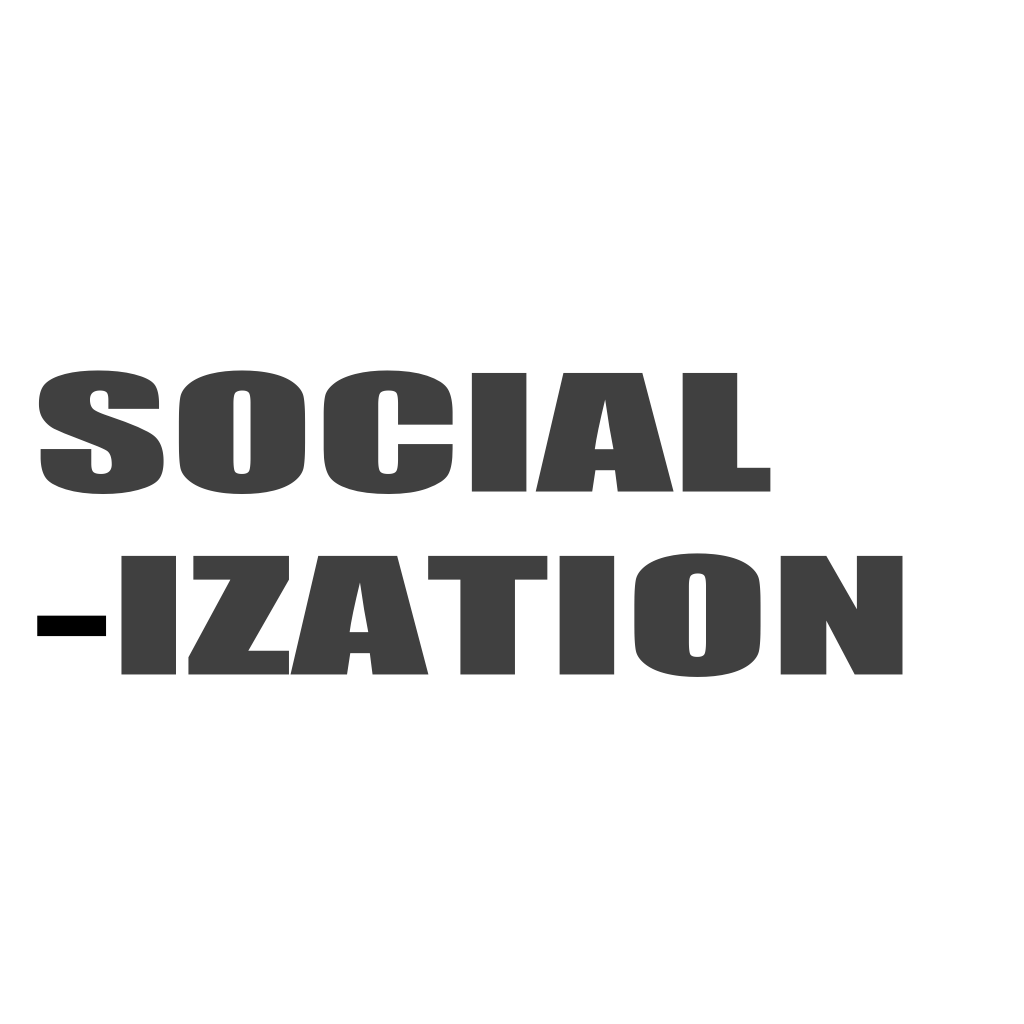Crafting Effective Error Messages for Social Media Platforms
 Elevate user experience on social media platforms with clear, empathetic, and actionable error messages.
Elevate user experience on social media platforms with clear, empathetic, and actionable error messages.Introduction
Error messages are a crucial component of user experience in social media platforms. They serve as a bridge between system failures and user understanding, guiding users through unexpected issues. Crafting effective error messages requires a delicate balance of clarity, empathy, and actionable information. This article explores the art of creating error messages that not only inform users about problems but also provide clear paths to resolution.
The importance of well-crafted error messages cannot be overstated in the context of social media platforms. These digital spaces thrive on user engagement and interaction, making seamless experiences paramount. When errors occur, as they inevitably do, the way they are communicated can significantly impact user satisfaction and retention. Effective error messages can transform potentially frustrating moments into opportunities for building trust and improving user experience.
This article will delve into various aspects of creating impactful error messages for social media platforms. We will explore best practices for language use, design considerations, and strategies for providing helpful information. By implementing these guidelines, social media platforms can enhance their user experience, reduce frustration, and maintain a positive relationship with their user base even when things go wrong.
The Importance of Clear and Concise Language
When crafting error messages for social media platforms, clarity and conciseness are paramount. Users encountering errors are often frustrated and seeking quick solutions. By using clear and straightforward language, we can effectively communicate the issue and guide users towards resolution. Shorter sentences have been shown to improve comprehension, with studies indicating that sentences of 14 words or less result in 90% understanding.
Avoiding technical jargon is crucial when writing error messages for a diverse user base. Instead of using complex terms or error codes, focus on explaining the problem in simple, everyday language that all users can understand. This approach helps reduce confusion and anxiety, making it easier for users to take the necessary steps to resolve the issue. Remember that the goal is to assist users, not to showcase technical expertise.
Empathy plays a significant role in crafting effective error messages. By acknowledging the user's frustration and offering clear guidance, we can turn a potentially negative experience into a more positive one. Use a friendly tone that aligns with your brand voice, but avoid being overly casual or humorous, as this may come across as insensitive during a moment of user difficulty. Strike a balance between professionalism and approachability to maintain user trust.
Read More: Overlooking Employee Advocacy is a Missed Opportunity in Social Media Marketing
User-Friendly Actions and Solutions
Error messages should provide clear, actionable steps for users to resolve issues. When crafting these messages, it's crucial to outline specific actions that users can take to address the problem at hand. By providing logical and easy-to-follow instructions, social media platforms can empower users to navigate through errors efficiently. This approach not only reduces frustration but also enhances the overall user experience on the platform.
One effective strategy is to incorporate inline validation for form submissions. This technique involves displaying error messages directly next to the relevant input fields, allowing users to quickly identify and correct mistakes. By implementing inline validation, social media platforms can guide users through the error resolution process in real-time. This approach significantly reduces the likelihood of users encountering a long list of errors after submitting a form, which can be overwhelming and discouraging.
Another important aspect of user-friendly error messages is providing alternative solutions or workarounds when possible. For instance, if a user encounters an error while uploading a photo, the message could suggest trying a different file format or reducing the image size. By offering multiple options, social media platforms demonstrate their commitment to helping users achieve their goals. This proactive approach can turn a potentially negative experience into a positive one, fostering user loyalty and satisfaction.
Maintaining Brand Consistency in Error Messages
Error messages present a unique opportunity to reinforce brand identity on social media platforms. When crafting these messages, it's crucial to maintain a consistent tone and voice that aligns with the overall brand personality. This consistency helps users feel more connected to the platform, even during moments of frustration. By infusing error messages with the brand's unique style, social media platforms can turn potential negative experiences into positive touchpoints.
Color schemes, typography, and imagery used in error messages should reflect the platform's visual identity. For instance, Socialization could incorporate its signature colors and font styles into error message designs, creating a seamless visual experience. The language used should also mirror the brand's communication style, whether it's professional, friendly, or quirky. However, it's important to strike a balance between brand personality and the seriousness of the error situation.
Customizing error messages for different sections or features of the platform can further enhance brand consistency. For example, an error in the messaging feature could have a different tone compared to an error in the profile settings. This approach allows for a more tailored user experience while maintaining overall brand cohesion. Regular reviews and updates of error messages ensure they remain aligned with evolving brand guidelines and user expectations.
Avoiding Blame and Negativity
Error messages on social media platforms should never place blame on users or use negative language. When users encounter issues, they're already likely to feel frustrated or confused. Crafting messages that avoid accusatory tones or phrases like "you did" or "you didn't" can significantly improve the user experience. Instead, focus on providing clear, actionable information that guides users towards resolving the issue at hand.
Positive language plays a crucial role in maintaining user engagement during error scenarios. By framing messages in a constructive manner, social media platforms can turn potentially negative experiences into opportunities for user education and support. For instance, rather than stating "Invalid password entered," a more effective approach would be "Please try a different password." This subtle shift in language encourages users to take action without feeling criticized.
Empathy is another key component in crafting non-blaming error messages. Acknowledging the user's potential frustration and offering reassurance can go a long way in maintaining a positive relationship. Social media platforms can incorporate phrases like "We understand this might be frustrating" or "We're here to help" to demonstrate that they value the user's experience and are committed to resolving any issues promptly.
Incorporating Real-Time Feedback and Error Prevention
One of the most effective ways to reduce frustration caused by error messages is to prevent errors from happening in the first place. Social media platforms can accomplish this by integrating real-time feedback mechanisms that alert users to potential mistakes before they submit a form or complete an action. For example, a username availability checker can notify users if their chosen handle is already taken, or a password strength meter can encourage secure entries as the user types.
Real-time feedback minimizes disruption to the user experience by offering immediate, contextual guidance. These proactive measures not only reduce the number of error messages users encounter but also create a more intuitive interface that anticipates and supports user needs. By investing in preventative design, platforms can significantly enhance usability, especially in high-interaction areas like account creation, content uploads, and settings adjustments.
Localizing and Personalizing Error Messages for Diverse Audiences
In today’s global digital landscape, social media platforms must cater to users from a wide range of cultural and linguistic backgrounds. Localizing error messages by providing them in the user’s preferred language is essential for clarity and inclusivity. But localization extends beyond translation—it includes adapting tone, examples, and even user references to resonate with different cultural contexts. A localized error message feels more natural and reduces cognitive friction for non-native speakers.
Personalization can further enhance the effectiveness of error communication. By referencing specific actions or content related to the user—such as “Your comment on the Travel Enthusiasts group couldn’t be posted”—platforms can make messages more relevant and easier to understand. Personalized error messages also reinforce a sense of individual attention and care, which can soften user frustration and foster a more positive emotional response to setbacks. Combining localization with personalization ensures that error messages feel human, helpful, and genuinely supportive, no matter who the user is or where they are.
Conclusion
Crafting effective error messages is an art that combines technical precision with human empathy. By focusing on clear communication, actionable solutions, and brand consistency, social media platforms can transform potential moments of frustration into opportunities for building trust and improving user satisfaction. As digital interactions continue to dominate our daily lives, the ability to guide users through errors with grace and efficiency will become an increasingly valuable skill. Platforms that master this art will not only retain users but also foster a sense of loyalty and appreciation, even in the face of technical challenges. Remember, every error message is a chance to demonstrate your commitment to user experience and to turn a momentary setback into a long-term win for both the platform and its users.
About Socialization
Social Media Manage serves as an essential resource for mastering social media, providing an array of tips and tricks suitable for both novices and experienced users. It emphasizes best practices for engaging effectively with audiences, optimizing content, and utilizing the distinct features of different platforms to enhance online visibility.
Newsletter
Subscribe to our newsletter to stay updated with the latest insights and strategies in social media management.
Toronto, ON, Canada
© Copyright Socialization. All Rights Reserved
